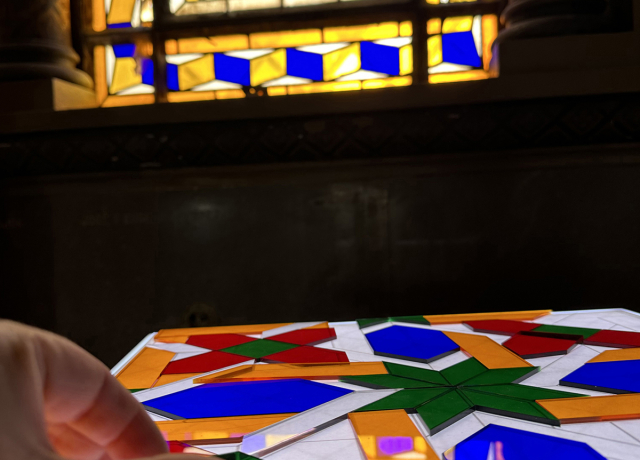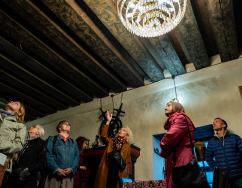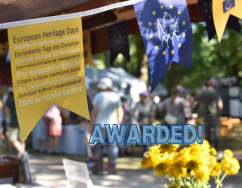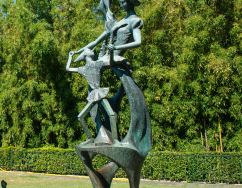European Heritage Days Article:
The Geometry of Light: a European Heritage Days Stories Project
European Heritage Days Article:
The Geometry of Light: a European Heritage Days Stories Project
Iglesia Jesuitas Valencia, stained glass light table - EHD Story, Spain (credit, Arae Patrimonio)
This is the first of a series of articles exploring the work of the grantees from the European Heritage Days Stories initiative from 2024 and looks at ‘The Geometry of Light’ project in Spain. While this project took place last year, its focus on education about stained glass means that much of the approach also relates closely to this year’s Architectural Heritage theme.
The European Heritage Days Story
Built in the neo-Byzantine style in the late 19th century, the old chapel of the San José school in Valencia on the east coast of Spain has been undergoing a programme of restoration to convert it into a multicultural community space. As explained in ‘The Geometry of Light. Teaching Resources for All’ Story, organisers saw the restoration of over 700 square metres of stained glass as an opportunity to highlight and develop teaching resources about the historical-artistic values of the windows.
Scoping the project’s goals
The European Heritage Days Stories grant was used to study and develop the practice of teaching and learning about stained glass. The approach of The Geometry’s of Light project aimed to align with the sustainability principles of the European Green Deal by highlighting the use of durable materials and supporting resilient economies by employing skilled artisans. The project was also designed to involve the local community in cultural activities; emphasising the importance of public participation in the preservation and transmission of cultural heritage. Open days attracted residents and tourists of all ages, while organisers worked closely with the calendars and needs of nearby schools and education centres as children and young people were a particularly key audience.
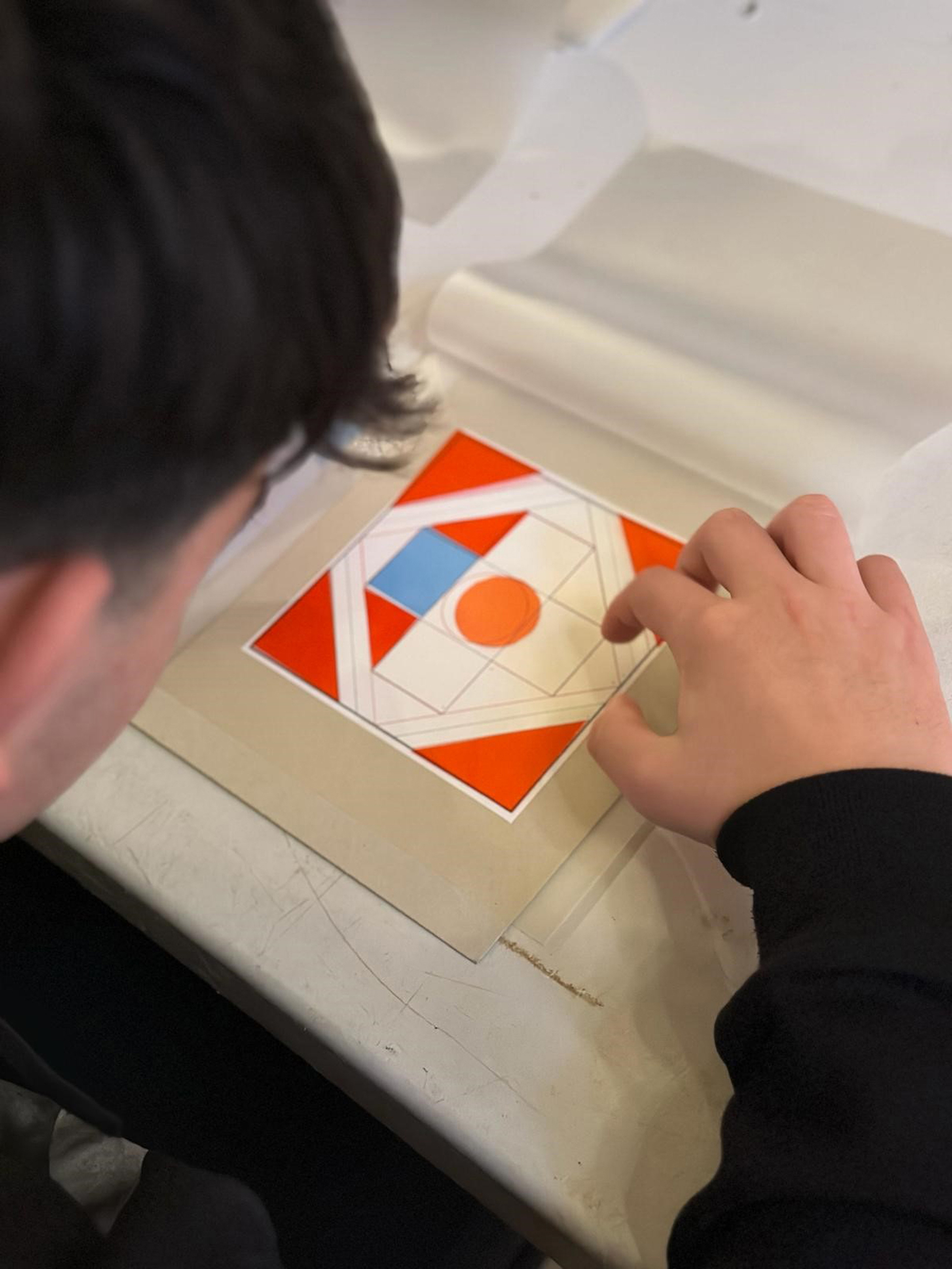
Holding creative workshops and expert-led tours
A series of activities inspired by the windows in the church took place, from hosting tours to encourage visitors to see the restored glass in-situ, to activities demonstrating the methods and patterns of making the designs. The project’s starting point was ‘creating the light’ which aimed to make educational resources about stained glass. This included installing several light tables at the church where visitors could understand the measurements and geometry seen in the glass in an interactive way, while a number of downloadable pattern sheets online were created to allow replication of the window designs in classroom settings. As well as engaging with children and the general public, the project also included training industry specialists. For this, workshops teaching the centuries-old techniques to technicians interested in developing their skills were overseen by the master stained-glassmakers who restored the windows.
Another key theme for the project was encouraging visitors to see the glass and discover its architectural and cultural relevance in context. ‘Visiting the light’ events involved a series of workshops for different age groups, with family events including storytelling about the symbols shown in the glass, and educational activities for high-school students combining history, technology, mathematics and humanities subjects. Interactive observational tours for all ages also took place, with a number of expert-led tours explaining the restoration techniques. In total, around 420 people participated in the project including over 150 children.
Emphasising the shared European cultural heritage of stained glass
One of the key aspects of The Geometry of Light project was about ‘sharing the light’. This was achieved by looking for synergies with other European cultural centres and linking in with the 2024 European Heritage Days theme, ‘Routes, Networks and Connections’. Involvement with international organisations including the European association ‘Future for Religious Heritage’ (FRH) allowed a network of organisations involved in similar work to be established. This enabled a two-way exchange of information and enriched the project by sharing the different educational approaches used at various sites across Europe, while in-person networking also took place during three trips abroad to museums and cultural sites in Poland, Croatia and France. An online international survey available in three languages also collected data about educational activities relating to stained glass, which broadened the project’s scope and outreach and resulted in the participation of 20 additional sites.
To further emphasise the European dimension of stained glass and to encourage intercultural dialogue, the window patterns created for the project incorporated shapes, colours and symbols from the different cultural spaces visited. International aspects and the shared cultural heritage of stained glass were also included in public activities, highlighting history such as medieval origins in France through to stylistic influences from Germany and Islamic art, as well as Venetian and Flemish technical developments.
Future plans and getting involved
By focusing on integrating educational approaches across a network of European cultural spaces the project was designed with continuity in mind. ‘Suitcases’ of resources including stained glass assembly shapes and patterns were sent to a range of museums in Europe to enable visitors to engage with the project across a number of locations. Organisers now hope that the international network they have created will lead to future cross-border projects and will be continuing to disseminate their findings at the next International Council on Monuments and Sites (ICOMOS) congress later in the year.
More information about The Geometry of Light project, as well as the downloadable online pattern kit featuring four geometric designs can be found on the dedicated page.. The Jesuit Church of Valencia is also posting updates about the restoration work on social media and can be followed on Facebook and Instagram at @IglesiaJesuitasValencia.
